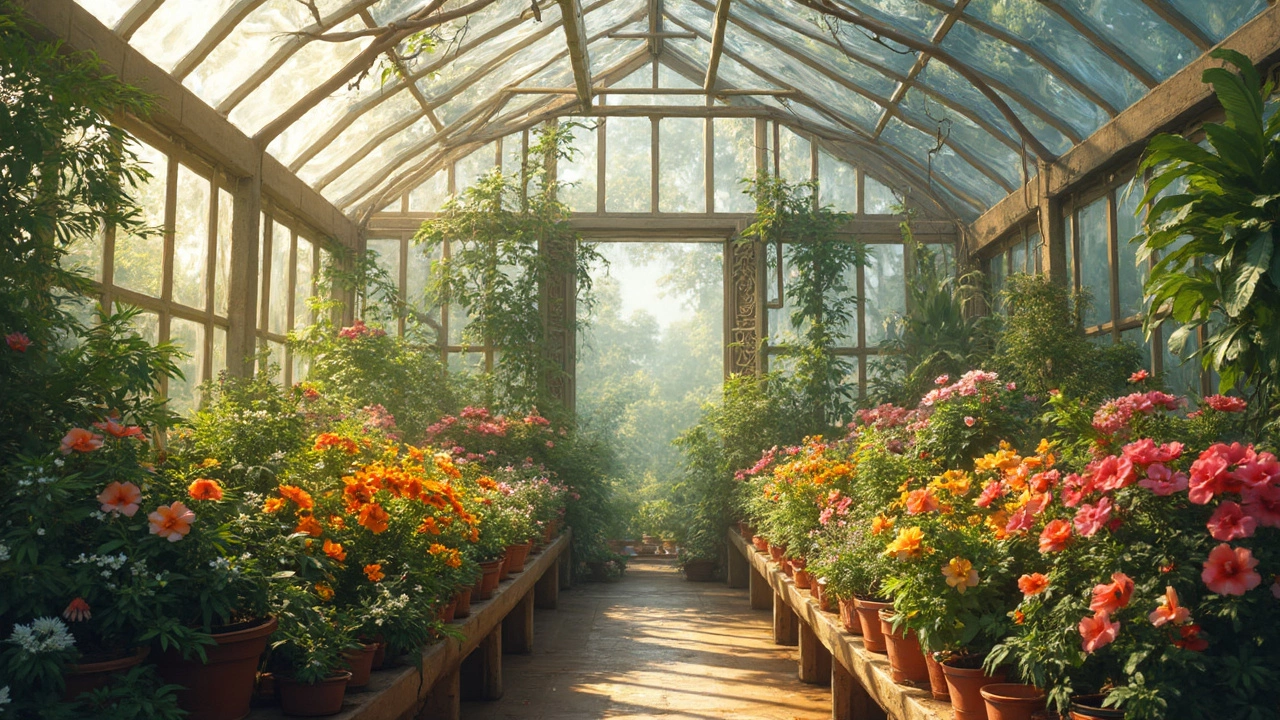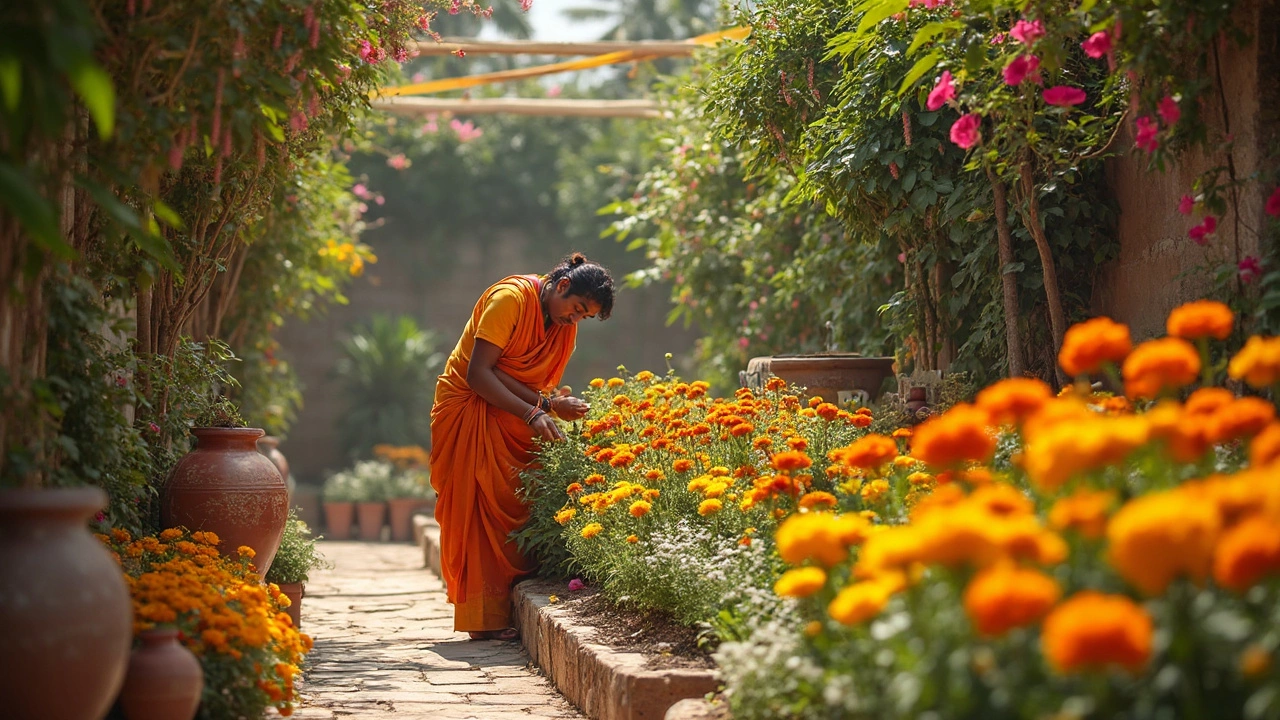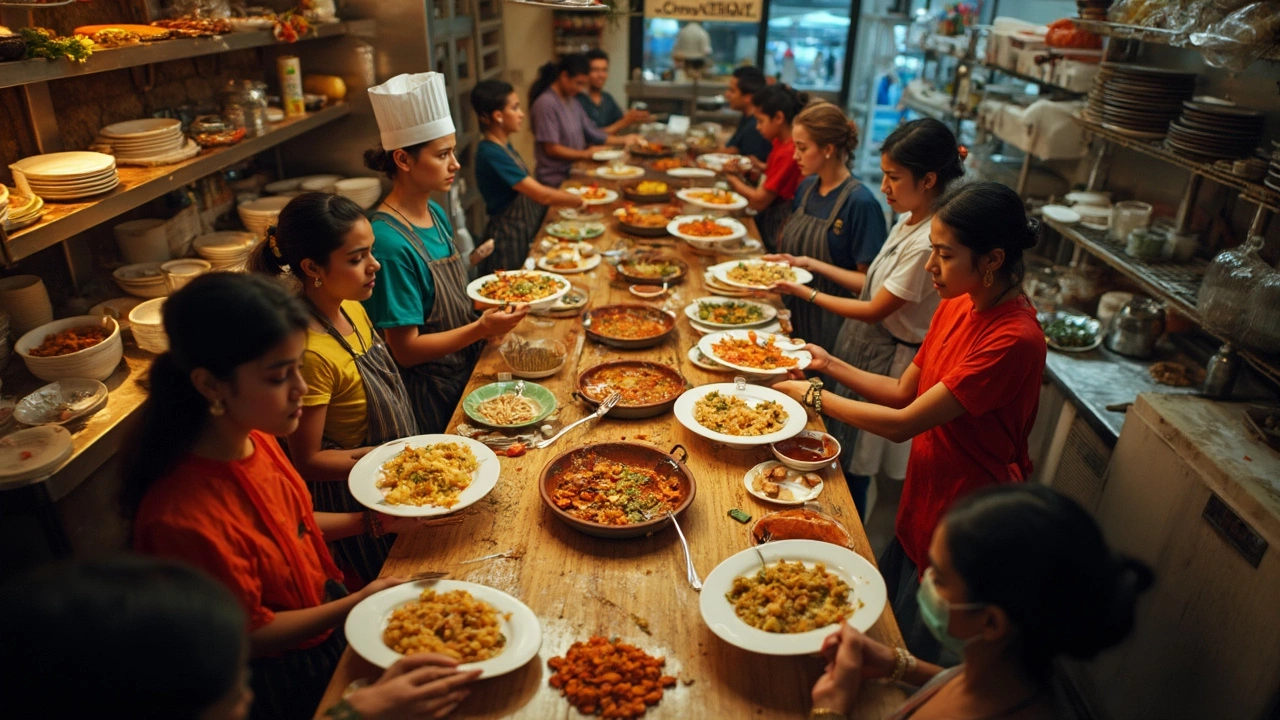Flower Gardening in India: Practical Tips, Top Blooms & Market Trends
When you start flower gardening in India, the art of growing ornamental plants suited to Indian climates. Also called Indian flower gardening, it blends tradition with modern techniques. flower gardening India is more than picking a colorful plant – it requires picking the right soil, water method, and timing. This tag page groups articles that walk you through every step, from choosing a bloom to mastering sustainable practices.
Choosing Climate‑Smart Blooms
One of the first decisions is the flower itself. Marigolds, bright, drought‑tolerant staples in temples and festivals thrive in hot, dry zones and need little care. Roses, the go‑to choice for weddings and formal events across India demand richer soil and regular feeding, but they reward you with endless shades. Other popular picks include jasmine for fragrance and hibiscus for bold tropical flair. The right bloom matches your local climate, soil type, and how much time you can spend tending the garden.
Flower gardening in India encompasses selecting climate‑appropriate species, preparing soil correctly, and applying water‑saving techniques. These three actions together create a thriving display that lasts through summer heat and monsoon bursts.
Beyond the classic choices, newer growers are experimenting with drip irrigation, a low‑pressure system that delivers water directly to roots. This method cuts water use by up to 50 % and reduces fungal issues caused by overhead watering. When paired with mulch, drip lines keep moisture where plants need it most, making it perfect for container beds and rooftop gardens in crowded Indian cities.
Another sustainable practice gaining momentum is no‑till gardening, a method that avoids soil disturbance to preserve structure and microbes. No‑till helps retain moisture, improves aeration, and reduces weed pressure—advantages that matter when you’re juggling a balcony garden and a backyard plot. Combining no‑till with organic compost creates a living soil that feeds your flowers naturally.
Understanding the Indian flower market adds a commercial angle to your hobby. The demand for marigolds spikes during Diwali and wedding seasons, while roses command premium prices in urban flower shops. Knowing when each bloom peaks helps you plan sowing schedules that align with market windows, whether you’re a backyard enthusiast or a small‑scale grower eyeing extra income.
For beginners, the simplest path is to start with easy‑to‑grow varieties that forgive occasional neglect. Articles in this collection explain how to test soil moisture, set up a basic drip line, and use kitchen scrap compost. If you’re more experienced, you’ll find deeper dives into soil amendment ratios, pest‑resistant cultivars, and how to scale up production for local markets.
Each post below adds a piece to the puzzle: daily watering myths, the economics of flower farming, and step‑by‑step guides to rehydrating hard soil. By the end, you’ll have a clear roadmap from seed selection to selling a bouquet at a local bazaar.
Ready to explore the full range of tips, tricks, and trends? Scroll down to discover practical advice that fits any garden size, skill level, and budget.
What Not to Grow in a Greenhouse: Flower Gardening in India
Some plants are just not meant for greenhouse life, especially in India. The unique climate and conditions of greenhouses can be a blessing for some flowers but a curse for others. Learn which flowers are better left outside to save yourself frustration and disappointment. Discover practical tips to make the most of your greenhouse space. Avoid common pitfalls, and ensure your gardening efforts bloom happily!
When Do Flowers Bloom in India? A Seasonal Guide
Explore the fascinating world of seasonal blooms in India and learn which flowers blossom in specific months. This guide offers valuable tips for gardening enthusiasts wishing to cultivate a vibrant garden throughout the year. Delve into the unique patterns that dictate flower blooming times across the diverse climate zones in India. Find out how to plan your garden to ensure a constant display of color and fragrance all year round.
- manufacturing
- India
- food processing
- garden tips
- rice cultivation
- government schemes
- balcony garden
- urban gardening
- balcony gardening
- profitable business
- business ideas
- plastic manufacturing
- drip irrigation
- plant care
- steel manufacturing
- sustainable gardening
- startup ideas
- steel industry
- flower gardening
- textile manufacturers






